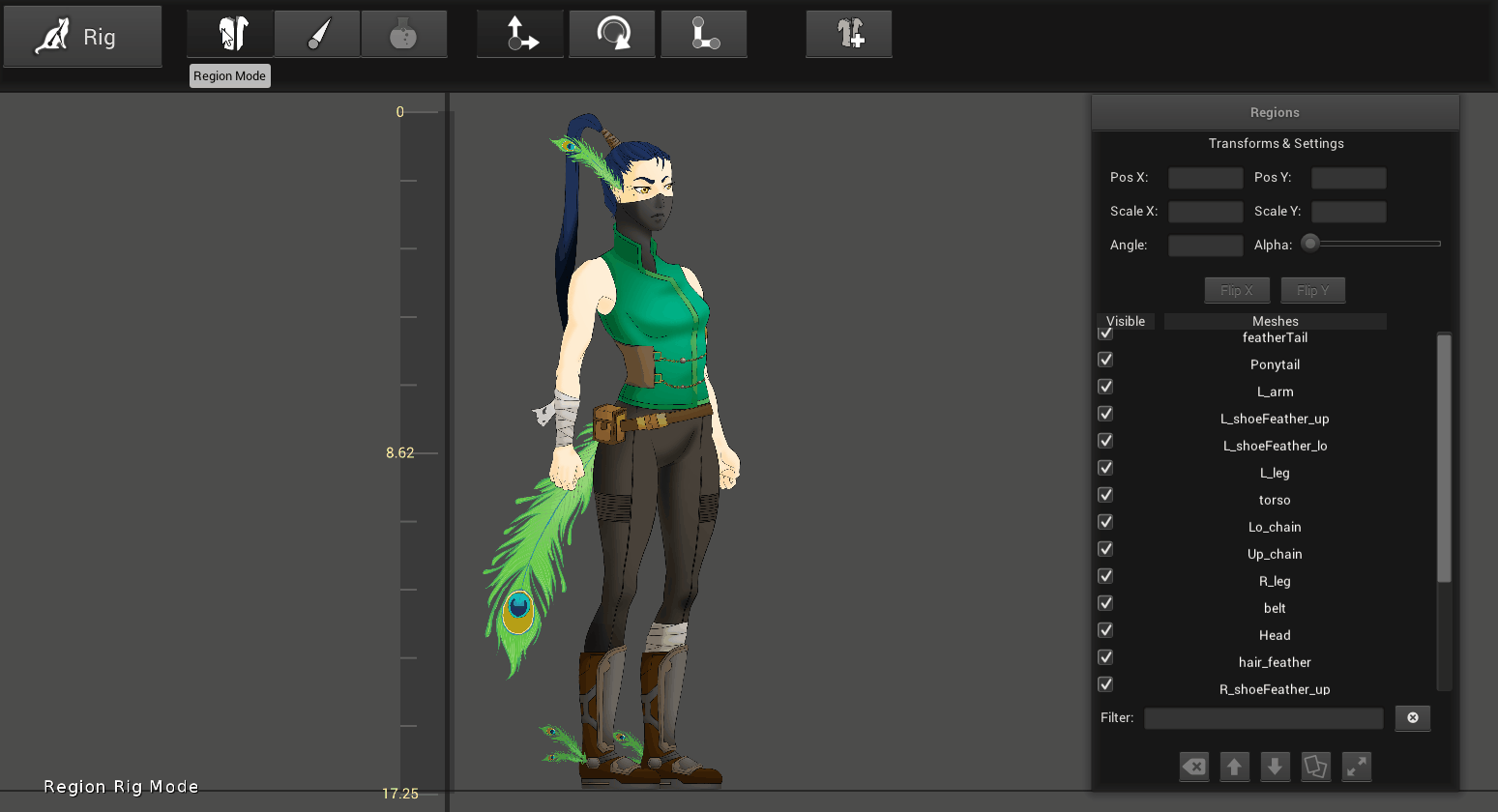

Ok, now the character is ready, so let’s start creating a new project in spine by clicking in the upper left Spine logo.

We'll set the rotation speed to 720 so that the character changes direction quickly.Image folder fix Setting up skeletons with Spine We're using our rotation speed variable to control how quickly the character rotates, remembering to multiply by ltaTime. We're then using the Quaternion RotateTowards method to rotate from our current rotation towards the desired direction. We're setting the forward direction to the movement direction, and we're setting the up direction to the Y axis using the Vector3.up property. We're then using the Quaternion LookRotation method to create a rotation looking in the desired direction. We're storing this in a Quaternion variable which is a type specifically for storing rotations. Next, we need to get the desired destination rotation. We want to make the character rotate towards the movement direction at a specific rate, so we've added a public variable for the rotation speed. Quaternion toRotation = Quaternion.LookRotation(movementDirection, Vector3.up) transform.rotation = Quaternion.RotateTowards(transform.rotation, toRotation, rotationSpeed * ltaTime) įirst of all, we've deleted the line where we set the forward direction. Transform.Translate(movementDirection * speed * Time. Vector3 movementDirection = new Vector3 (horizontalInput, 0, verticalInput) GetAxis( "Horizontal" ) įloat verticalInput = Input.
#SPINE2D FLIP UNITY3D UPDATE#
Public float rotationSpeed void Update ()įloat horizontalInput = Input. We'll set the speed to five in the Inspector panel. Let's save the script and switch back to Unity. We're also multiplying by ltaTime to ensure it moves at the same speed regardless of our framerate.įinally, we're also specifying that we are moving the character relative to the World. We're then multiplying the direction by this speed. We want to be able to control how fast the character moves, so we've created a public variable for the speed. Next, we're changing the position of the character based on the movement direction by accessing the object's Transform and using the Translate method to move it in the direction we want. We're then normalising the direction vector to ensure it has a magnitude of one. We're setting the direction on the X axis to our horizontal input, the direction on the Y axis to zero as we don't want the character to move up and down, and the direction on the Z axis to our vertical input. We're then using these input values to create a three dimensional vector for the direction we want the character to move. We're also doing the same for the vertical axis.

In our Update method, we're getting the player input on the horizontal axis and assigning it to a variable. Transform.Translate(movementDirection * speed * ltaTime, Space.World) Vector3 movementDirection = new Vector3(horizontalInput, 0, verticalInput) Public class PlayerMovement : MonoBehaviourįloat horizontalInput = Input.GetAxis( "Horizontal") įloat verticalInput = Input.GetAxis( "Vertical")


 0 kommentar(er)
0 kommentar(er)
